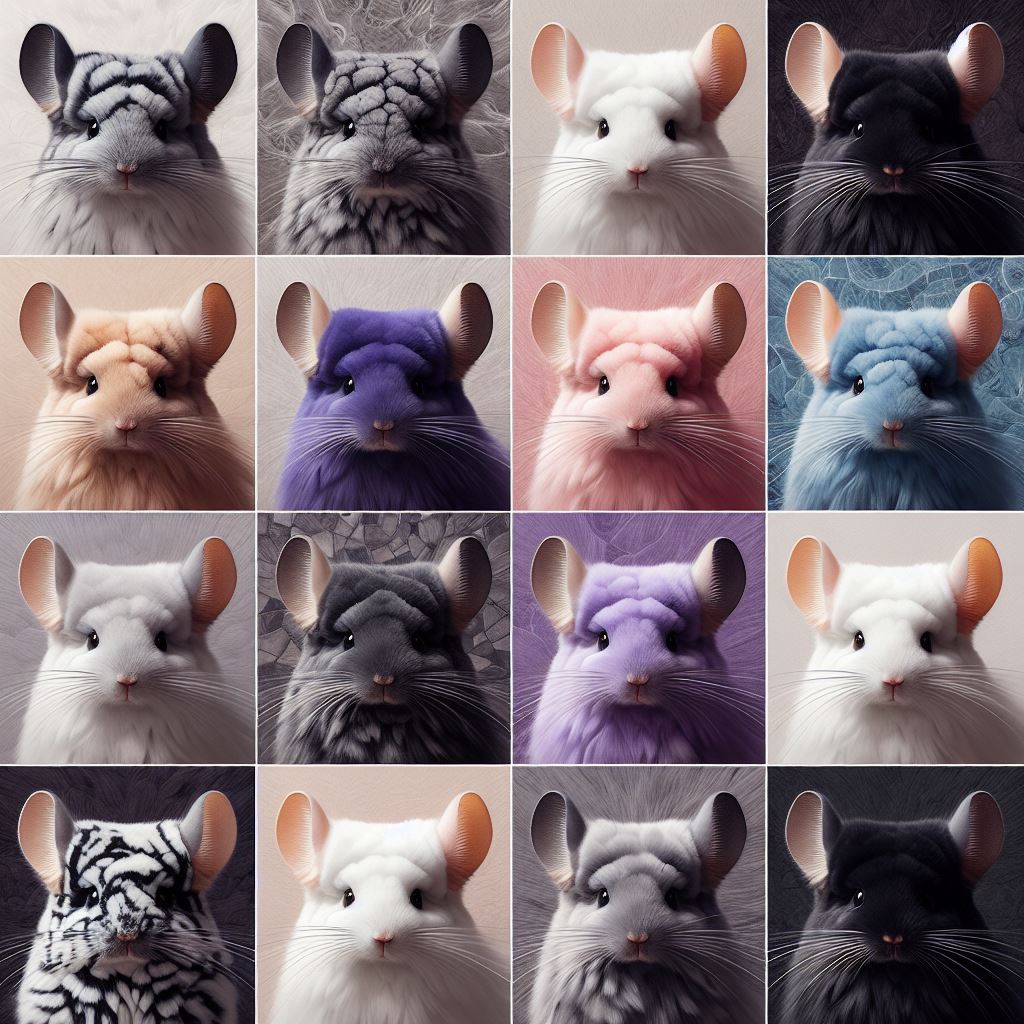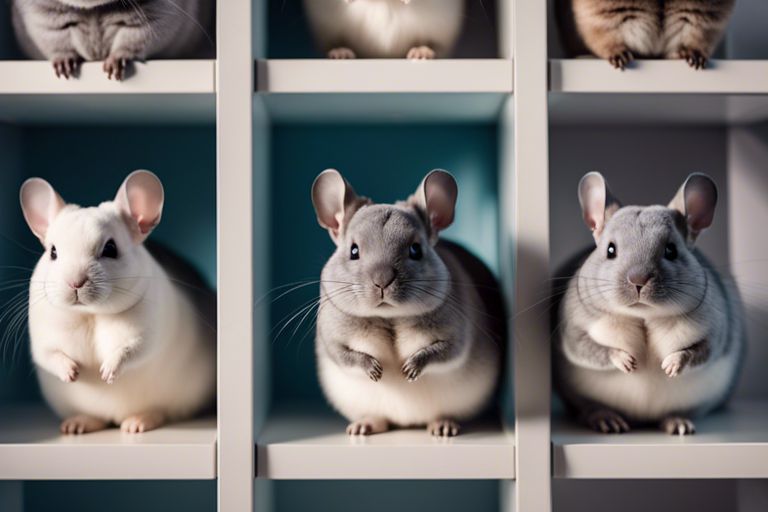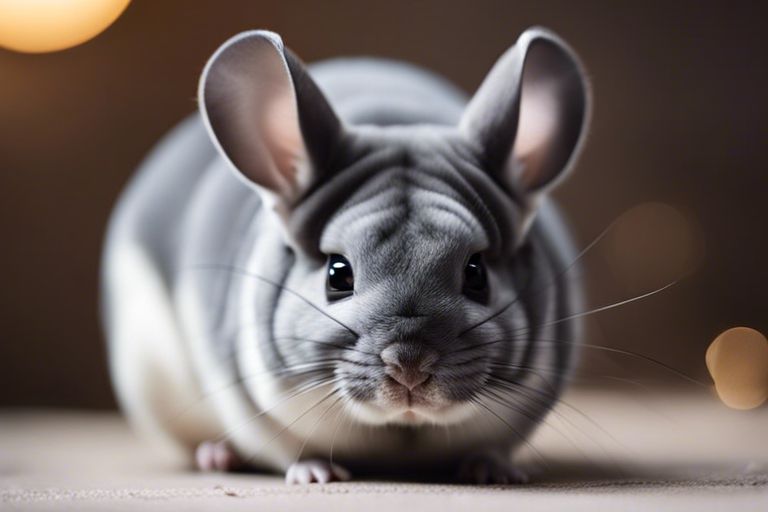Chinchillas come in a variety of colors, each with its own unique characteristics and charm. From the standard grey to the rare violet, these lovable creatures exhibit a stunning range of hues that captivate chinchilla enthusiasts worldwide. Understanding the different colors of chinchillas is not only fascinating but also crucial for breeders and owners to recognize and appreciate the beauty and diversity within this small furry animal species. Let’s investigate into the world of chinchilla colors and discover the striking variations that make each chinchilla truly one of a kind.
Key Takeaways:
- Standard Gray: The most common color of chinchillas, displaying a blue-gray fur with white bellies.
- Beige: A light tan color with a white underside, known for its soft and luxurious fur.
- Black Velvet: A striking color variation with a glossy black fur and a dark charcoal undercoat.

Understanding Chinchilla Coat Colors
Natural Colors of Chinchillas
While chinchillas are primarily known for their soft fur, they also come in a variety of natural colors. These colors can range from the common standard gray to more rare colors like white, ebony, beige, and violet. Each color variation adds a unique touch to these already charming creatures.
Impact of Genetics on Chinchilla Colors
For chinchilla enthusiasts and breeders, understanding the impact of genetics on chinchilla colors is crucial. The coat color of a chinchilla is determined by a combination of dominant and recessive genes. Crossing different color variations can lead to exciting results, with unexpected color combinations in the offspring. Genetics play a significant role in producing the desired coat colors in chinchillas.
Any chinchilla owner looking to breed these animals should educate themselves on color genetics to achieve the desired results. Breeding chinchillas without understanding the genetic impact can result in unpredictable outcomes. It is necessary to research and plan carefully to maintain the purity and quality of the chinchilla colors.
Colors can sometimes be influenced by genetic mutations or health issues. Breeding practices should prioritize the well-being and health of the chinchillas to prevent any negative effects on coat colors. However, with proper care and understanding of genetics, breeders can produce stunning chinchillas with unique and desirable coat colors that showcase the beauty of these creatures.
Varieties of Chinchilla Colors
Standard Grey Chinchillas
If you are a beginner chinchilla owner, the standard grey chinchilla is the most common and easiest to find. These chinchillas have a soft, grey fur with a white belly and are known for their charming appearance and friendly demeanor. Their fur is dense and silky, making them a popular choice for chinchilla enthusiasts.
Rare and Unusual Chinchilla Colors
Rare and unusual chinchilla colors are highly sought after by enthusiasts looking for a unique addition to their chinchilla collection. Colors like black velvet, white mosaic, and ebony are considered rare variations that can be more challenging to find in the market. These unique colors add a touch of elegance and rarity to any chinchilla collection.

Factors Influencing Chinchilla Colors
Your chinchilla’s fur color can be influenced by a variety of factors. Understanding what affects their coat color can help you appreciate the diversity in chinchilla colors and make informed decisions when breeding or caring for these adorable pets.
Environmental Factors Affecting Fur Color
- Light exposure: Sunlight and artificial light can play a role in fur color development.
- Diet: Nutritional deficiencies or excesses can impact the quality and color of a chinchilla’s fur.
For chinchillas, their environment can have a significant impact on their fur color. Light exposure can influence the shade and richness of their coat, while a balanced diet is crucial for maintaining vibrant fur color. Though genetic factors play a significant role, environmental factors should not be underestimated.
The Role of Breeding in Coat Color Variations
- Selective breeding: Breeders can manipulate chinchilla colors through careful selection of parents.
- Genetic diversity: Crossing chinchillas with different coat colors can lead to offspring with unique color variations.
Variations in chinchilla coat colors can be achieved through selective breeding practices. Breeders carefully choose parent chinchillas with specific color traits to produce offspring with desired hues. Genetic diversity is key in creating new and exciting coat colors in chinchillas, providing a wide range of options for chinchilla enthusiasts. Factors like genetics and breeding techniques are vital in creating diverse and unique chinchilla colors.
Caring for Different Chinchilla Colors
Health Considerations for Various Colors
To ensure the well-being of chinchillas with different colors, it is crucial to be aware of potential health considerations. Some chinchilla colors, such as white or beige, may be more prone to skin irritations or allergies. Regularly check your chinchilla’s skin for any signs of redness, irritation, or hair loss, and consult a veterinarian if any concerning symptoms arise. Additionally, provide a balanced diet, appropriate bedding, and a clean living environment to promote your chinchilla’s overall health and vitality.
Grooming Requirements for Chinchilla Fur
To maintain the pristine condition of your chinchilla’s fur, grooming is vital. Regular dust baths are indispensable for chinchillas, as they help absorb excess oils and keep their fur clean and healthy. Brushing their fur lightly with a chinchilla-specific brush can prevent matting and tangling. Additionally, keep an eye out for any signs of fur chewing, as this could indicate stress or health issues that require attention.
Chinchillas are meticulous groomers themselves, regularly grooming their fur to keep it in optimal condition. However, as a responsible chinchilla owner, it is crucial to supplement their grooming routine with regular dust baths and light brushing to ensure their fur remains clean and healthy.
Final Words
From above, it is clear that chinchillas come in a variety of colors, ranging from standard gray to white, beige, black, and even violet. Each color variation adds a unique charm to these adorable creatures. Whether you are looking to adopt a chinchilla as a pet or simply appreciate their beauty, understanding the different colors they come in can help you make an informed decision. Whichever color you choose, one thing is for certain – chinchillas are truly fascinating animals with a wide range of colors to suit every preference.
